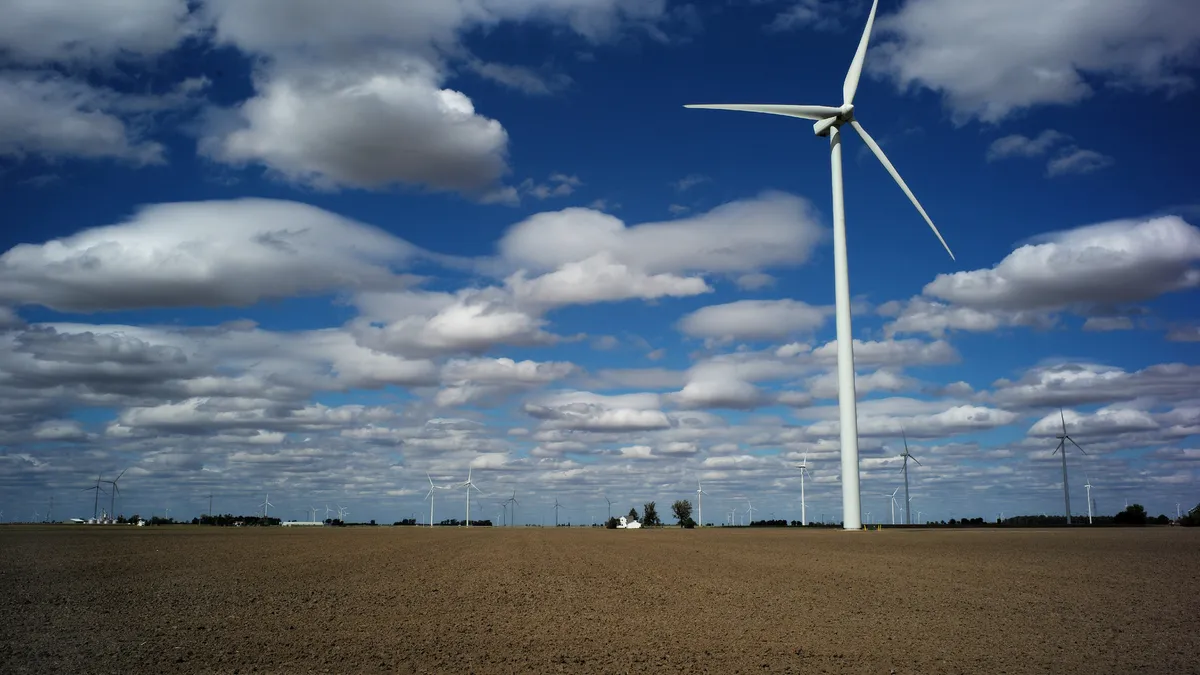Dive Brief:
- The North American Electric Reliability Corporation (NERC) sees potential capacity shortages in Texas and Ontario, Canada, over the next few years, but on the whole, believes that North American grid operators will have adequate reserves to meet growing peak electricity demand for the next decade.
- The challenge for the nation's electric system will be in accommodating a growing amount of renewable resources, according to NERC's 2019 Long-Term Reliability Assessment, released Thursday. The analysis shows more than 330 GW of solar and wind capacity are planned for installation through 2029.
- A robust transmission system will be needed to accommodate the new renewables and a growing volume of distributed energy resources. However, NERC warned development of transmission infrastructure has declined from nearly 40,000 circuit miles earlier this decade to less than 15,000 circuit miles planned over the next ten years.
Dive Insight:
Despite thin reserve margins in two balancing areas, NERC's long-term outlook is for a strong and reliable grid as more clean energy and flexible resources are brought online.
"Just because an area is below target reserve margins doesn't mean they are inadequate," NERC Director of Reliability Assessment and Performance Analysis John Moura told reporters in a call yesterday discussing the findings.
The Electric Reliability Council of Texas (ERCOT), for instance, went into the 2019 summer with a reserve margin of 8.6% and relied on demand response resources to maintain reliability, but was never forced to cut power.
In Texas, industrial customers are "highly advanced and worked closely with ERCOT on peak shaving," said Moura.
While ERCOT's tight reserve margins are expected to improve in the next few years as new generation comes online, the margins are also emblematic of how electric systems are operating in a more distributed and efficient fashion. The state's margins have tightened as older generators have been retired or are expected to.
In Ontario, a reserve margin shortfall is expected beginning in 2023, driven by nuclear retirements and refurbishments. "However, market mechanisms that secure incremental capacity are expected to begin addressing the shortfall in future capacity auctions," according to NERC's report.
The report also found an emerging risk of energy deficiencies during off-peak conditions in the Midcontinent ISO area and the Western Electricity Coordinating Council Region.
Growing variable, distributed resources will challenge bulk power operators
The broader story of the nation's electric grid continues to be the changing resource mix, said officials. Additional flexible resources will be required to offset ramping and variability, NERC's report concluded. And the growth in natural gas generation requires "continued and coordinated planning to maintain appropriate fuel assurance."
Gas generation is expected to remain steady, making up 40% of on peak capacity in 2029 — the same as it does now. Wind and solar will rise from a combined 10% to 16% across the same period.
A total of 8 GW of electric storage is expected to be connected to the bulk power system by 2024, according to NERC. And 35 GW of distributed solar is expected in the next five years as well.
The interplay between transmission and distributed resources will become more important, the report found. Transmission planners and operators may not have complete visibility of the resources connected to their systems, and more information is needed for system planning, forecasting and modeling.
Transmission additions will need to pace the rapid renewables growth, NERC warned.
"Many new [variable energy resources (VERs)] will be located in areas remote from demand centers and existing transmission infrastructure," the report said. "In some areas, such as [Southwest Power Pool] and ERCOT, the level of VERs are reaching full subscription of the transmission network and exhaust current as well as planned transmission capacity."
While existing electric transmission systems and planned additions "appear adequate" to meet customer demand over the next decade, NERC also found "less and shorter lines are being constructed at a time when more and longer transmission is needed to accommodate large amounts of wind and solar resources."
A lack of future transmission projects does not currently pose a reliability concern, according to NERC officials. But they stressed that the issue is amplified when considering new variable resources coming online.
The volume of variable, inverter-based and electricity storage resources identified in this year’s report "serves as an early indicator of a transforming bulk power system,” Moura said.
NERC's report also contained recommendations for electric reliability organizations, including accounting for DERs in the bulk power system management, and considering the impact of electricity storage on system planning and operation.















